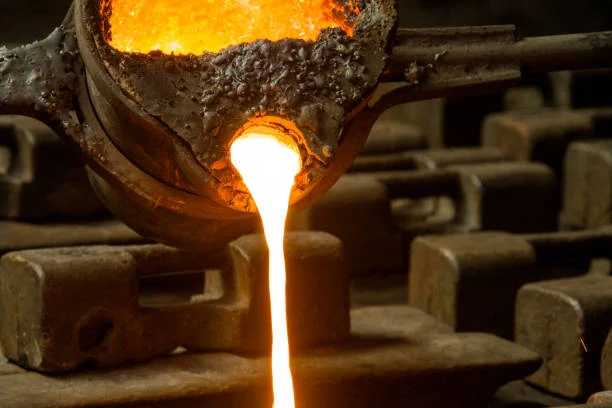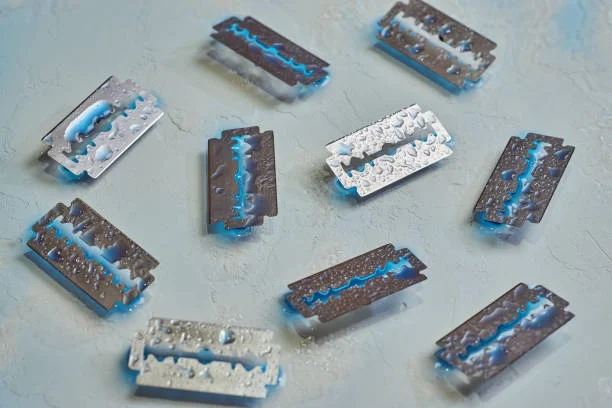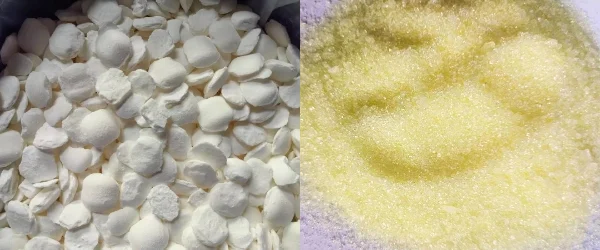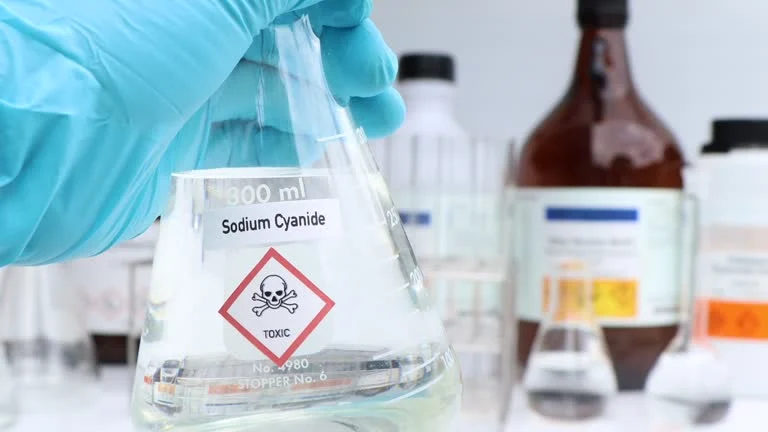
Introduction
Gold cyanidation is a widely used process in the mining industry for extracting gold from its ores. The addition of certain chemicals can significantly influence the efficiency of this process. Among these additives, Lead Salts have shown complex effects, both activation and deactivation, on the Gold Cyanidation reaction. Understanding these effects is crucial for optimizing Gold Extraction processes, reducing costs, and minimizing environmental impacts.
The Gold Cyanidation Process Basics
Gold cyanidation, also known as the MacArthur-Forrest process, involves the reaction of gold with cyanide ions in the presence of oxygen. This chemical reaction enables gold to dissolve from the ore matrix into the solution, allowing for its subsequent recovery. However, the presence of various impurities in the ore and the reaction conditions can affect how quickly and completely gold dissolves.
Activation Effects of Lead Salts
Mechanism of Activation
Catalytic Role in Electrochemical Reactions
Lead salts can act as catalysts in the gold cyanidation process. In the low overpotential region (– 0.35 V vs. Ag/AgCl), adding lead salt has been shown to speed up the gold leaching process in cyanide solutions. Cyclic voltammetry (CV) experiments indicate that lead participates in the electrochemical reactions occurring at the gold surface. Under cyanidation conditions, gold forms alloys with lead. These alloys create tiny electrochemical cells on the gold surface, where oxidation and reduction reactions take place simultaneously. The oxidation reaction at the interface of the gold - alloy promotes the breakdown of gold, while the reduction reaction involves oxygen or other oxidizing substances in the solution. This electrochemical action significantly accelerates the overall rate of gold dissolution.
Inhibition of Impurity Reactions
In ores containing copper and other impurities, lead salts play a beneficial role. Copper minerals in the ore can consume cyanide and oxygen, competing with the gold - cyanidation reaction. Lead salts interact with copper ions or copper - bearing minerals, forming insoluble compounds that prevent copper minerals from dissolving. This reduces the amount of cyanide consumed by copper, leaving more cyanide available for the gold - cyanidation reaction and thus increasing the gold leaching rate. In high - copper gold - bearing ores, adding lead salts has been observed to decrease the amount of copper dissolved in the cyanide solution, maintaining a favorable ratio for gold dissolution.
Experimental Evidence of Activation
Both laboratory and industrial studies have confirmed the Activation Effects of lead salts. In one study on a gold - bearing ore with 0.25% galena, adding lead salt significantly improved the gold leaching rate. Industrial practices also support these findings. In some gold mines, when processing specific types of ores, adding the right amount of lead salts reduced the consumption of Sodium Cyanide from over 12 kg/t to as low as 5 kg/t and increased the gold recovery rate to over 98%.
Deactivation Effects of Lead Salts
Conditions for Deactivation
Presence of Silicate and Certain Lead - Bearing Minerals
Under certain circumstances, especially in the presence of silicate and specific lead - bearing minerals, adding lead can slow down the oxidation of gold. At a potential of – 0.35 V (vs. Ag/AgCl), the rate at which gold dissolves decreases. The exact reason is complex, but it may involve the formation of surface films or the interaction of lead substances with the gold surface, which blocks cyanide ions and oxygen from reaching the gold. For example, some lead - bearing minerals react with the cyanide solution to form compounds that cover the gold surface, hindering the normal progress of the cyanidation reaction.
High - Sulfur Ores
In high - sulfur ores, adding lead may not be beneficial and can even lead to deactivation. When the sulfur content in the ore is high, sulfide minerals are oxidized to elemental sulfur during the cyanidation process. This elemental sulfur forms a layer on the gold surface that prevents it from reacting with the cyanide - oxygen solution. Lead may promote the oxidation of sulfide minerals to sulfur, further inhibiting the gold cyanidation reaction and causing a significant drop in the gold dissolution rate.
Analytical Evidence of Deactivation
X - ray photoelectron spectroscopy (XPS) analysis provides evidence of the deactivation effects. In samples from high - sulfur ore cyanidation processes with lead addition, XPS spectra show the presence of sulfur - containing substances on the gold surface, indicating the formation of the passivating sulfur layer. Electrochemical tests also confirm that the rate of gold oxidation decreases in the presence of silicate and lead - bearing minerals.
Factors Influencing the Balance between Activation and Deactivation
Concentration of Lead Salts
The amount of lead salts added to the cyanidation system is crucial. At low concentrations, lead salts usually have an activating effect, promoting gold dissolution. But if the concentration is too high, it can lead to the formation of excessive reaction products that cause deactivation. For example, an overly high concentration of lead ions can result in the precipitation of lead - cyanide complexes that coat the gold surface and stop the cyanidation reaction.
Ore Composition
The composition of the ore, including the types and amounts of sulfide minerals, silicates, and other impurities, determines whether lead salts act as activators or deactivators. Ores with a high content of certain sulfide minerals, like pyrite in high - sulfur ores, are more likely to experience deactivation when lead is added. Conversely, ores with a significant amount of copper minerals can benefit from the activation effect of lead salts.
Reaction Conditions
Reaction conditions such as temperature, pH, and the concentration of oxygen and cyanide in the solution also impact the activation and deactivation effects of lead salts. A higher temperature can speed up both the beneficial and harmful reactions related to lead. The pH of the solution affects how lead and other metal ions exist, influencing their interactions with gold and other minerals. Adequate oxygen concentration is necessary for the gold - cyanidation reaction to proceed normally, and lead salts can interact with oxygen in different ways depending on the conditions, either enhancing or inhibiting the reaction.
Conclusion
Lead salts have both activation and deactivation effects on the gold cyanidation process. The activation effects, such as catalyzing electrochemical reactions and reducing impurity interference, can significantly improve gold extraction efficiency. However, under certain conditions, such as in the presence of silicate, specific lead - bearing minerals, or high - sulfur ores, lead salts can cause deactivation by slowing down gold oxidation or forming blocking layers on the gold surface. Understanding the factors that influence these effects, including lead salt concentration, ore composition, and reaction conditions, is essential for using lead salts successfully in gold cyanidation. By carefully controlling these factors, the mining industry can optimize gold extraction, reduce reagent consumption, increase profitability, and minimize environmental impacts. Future research could focus on creating more accurate models to predict lead salt behavior in different ore - processing situations and finding new ways to counteract deactivation effects.
- Random Content
- Hot content
- Hot review content
- Booster(Detonating insensitive explosives)
- Calcium Peroxide 60% Assay Yellowish Tablet
- Potassium borohydride
- Anhydrous Ammonia 99% Liquid
- Pharmaceutical Intermediate Glycine with High Quality 99%
- Diethylene Glycol
- Di(ethylene Glycol) Vinyl Ether
- 1Discounted Sodium Cyanide (CAS: 143-33-9) for Mining - High Quality & Competitive Pricing
- 2Sodium Cyanide 98% CAS 143-33-9 gold dressing agent Essential for Mining and Chemical Industries
- 3Sodium Cyanide 98%+ CAS 143-33-9
- 4Anhydrous Oxalic acid 99.6% Industrial Grade
- 5Soda Ash Dense / Light 99.2% Sodium Carbonate Washing Soda
- 6Oxalic acid for mining 99.6%
- 7Calcium hydroxide Industrial Grade 90%
- 1Sodium Cyanide 98% CAS 143-33-9 gold dressing agent Essential for Mining and Chemical Industries
- 2High Quality 99% Purity of Cyanuric chloride ISO 9001:2005 REACH Verified Producer
- 3 High-Quality Sodium Cyanide for Leaching
- 4Powdery emulsion explosive
- 5Industry Grade Electron grade 98% Sulfuric Acid H2SO4 Sulphuric Acid Battery Acid Industrial Sulfuric Acid
- 6Colloidal emulsion explosive
- 7sodium hydrosulfide 70% flakes used Mining Industry











Online message consultation
Add comment: